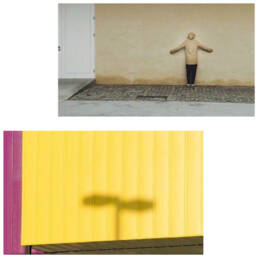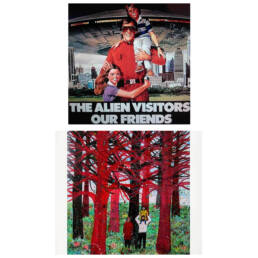You are scrolling down your instagram feed, then you visit a profile by which you feel attracted . No matter what kind of profile is, you are fascinated by it and you want to see more. Few moments later you decide – or not – to follow and put it in your daily feed. Once landed on someone’s profile look at a media cliché of the creator: details fetichism, anthropological analysis, lo-fi / hi-fi aesthetics, virtual wunderkammer, the-good-life-chronicles, meme and shit posting, the no-post only-stories etc. Your very landscape is alive because you can see nothing around you that is not your own image and everything speaks to you about yourself. You populate your feed with real friends and dream friends, the place you want to visit and non-existent ones, things you want to own or you would like to create. You became a follower, a role halfway between voyeurism and plagiarism aimed to belong to an ephemeral place.
You feel your shots sometimes are too random and you should probably set yourself more conceptual goals and curate more. Are you overthinking so much? Yes, you are just (re)producing contents in a Fight Clubbian copy of a copy of a copy, trying to resemble your digital Ideal. Repeated examples of what you love the most feed the computer and returns into the images you produce, unconsciously processed like memories and dreams of space never built and time never lived.
You post images strongly inspired to others speaking a visual coinè, a tool to establish connections and, on the other side, an Artificial Intelligence recognise similar patterns opening a dialogue with the user.
During our personal and private media experience there is a particular in-between moment we never pay attention to. Often, when images ordered by the AI coexist on the screen, common patterns emerge clearly visible. It goes unnoticed because we are busy to read captions and hyperlinks or go on scrolling down. Screenshot of those particular rendezvous ere collected into Hypermediacy , a photographic project conceived to understand what digital identity is and how is mirrored into the Feed.
Few examples here attached are enough to get some questions more: how doest it affects our imaginary?
Is attraction connected more to objects generated by users or by the automation of media itself?
An adult spends, more or less, 2 hours and half scrolling down social media living a cinematic experience in which an image follows another. Contents interact each others, through movement, when you scroll your 7.4” inches screen. In this perspective everyone handle and watch a personalised movie set and played in favourite places and by favourite characters. A live-stream of consciousness of a general identified AI we, as culture, are crying out to interact with. The AI gradually absorb the principles of genres to propose related contents simplifying user experience. Does this kind of automation reduce cultural diversity over time? It reduce our imagination?
Vanessa Pinzoni
Lives and works in Milano. Strategic design in architecture studio, media theory enthusiastic research and independent visual art practices.
On Instagram: @vanessa.pnz





